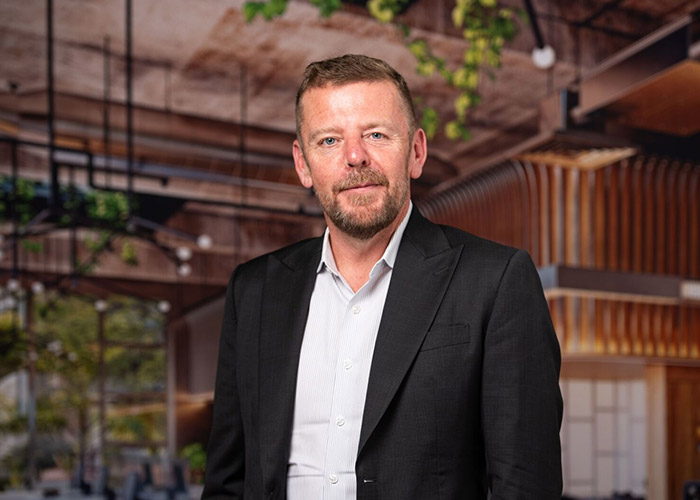How CIOs Can Drive Positive Disruption Through Global Macro-Economic Challenges

CIOs
have
a
significant
opportunity
to
drive
a
transformation
and
innovation
agenda
in
2023.
Despite
the
global
economic
outlook
pointing
to
ongoing
market
disruption,
inflation,
and
recession
in
many
parts
of
the
world,
organisations
are
going
to
want
to
continue
to
invest
in
technology,
and
this
will
benefit
both
employees
and
customers.
Research
in
the
The
Human-Centered
Insights
To
Fuel
IT’s
Vision
2022
report,
conducted
by
Reach3
for
Lenovo,
2024,
shows
that
20
per
cent
of
the
Global
2,000
CEOs
will
report
an
increased
appetite
for
risk
and
improved
resilience.
As
Deloitte
research
highlights,
the
reasons
for
this
come
down
to
handling
disruption.
“Almost
100
per
cent
of
responding
leaders
believe
their
organisations
will
face
serious
threats
or
disruptions
in
the
next
two
to
three
years,”
the
Deloitte
report
notes.
“They’re
concerned
about
the
breakneck
pace
at
which
their
organisations
must
develop,
deploy,
and
manage
new
technologies.
And
they’re
keenly
aware
of
technology’s
potential
to
disrupt
business
models,
customer
behaviours,
and
markets.”
Delivering
the
technology
that
will
assist
the
organisation
to
deliver
an
innovation
strategy
and
address
the
challenge
of
disruption
will
not
be
easy.
The
Lenovo
and
Reach3
research
shows
that
76
per
cent
of
CIOs
are
finding
it
a
challenge
to
balance
business
innovation
and
operational
excellence.
Many
IT
leaders
are
still
grappling
with
the
shift
to
hybrid
working
environments
and
the
massive
shift
in
IT
strategy
that
is
required
for
that
to
be
viable
over
the
longer
term.
Additionally,
CIOs
need
to
understand
that
in
a
highly
disrupted
global
market,
resilience
means
being
flexible
and
able
to
adapt.
According
to
a
report
on
CIO,
72
per
cent
of
IT
leaders
are
frustrated
by
their
business
leader’s
changing
of
priorities.
There’s
little
alternative
there,
however.
Businesses
need
to
adapt
to
rapid
changes
in
the
macro
environment,
and
this
means
business
strategies
will
be
under
constant
review.
By
focusing
on
the
experience,
both
for
employees
and
customers,
the
CIO
can
lead
positive
disruption
and
innovation,
while
at
the
same
time
promoting
stability
and
resilience
across
the
organisation.
How
the
employee
experience
affects
resilience
One
great
concern
that
business
leaders
have
is
the
ongoing
impact
of
the
global
“Great
Resignation”.
While
there
are
signs
overseas
that
the
trend
is
easing,
in
Australia
it
may
just
be
getting
started.
A
recent
PwC
study
found
that
38
per
cent
of
Australian
workers
are
looking
for
a
new
job,
and
this
is
contrasted
with
73
per
cent
of
leaders
finding
it
difficult
to
attract
new
talent.
Employee
retention
is,
therefore,
a
critical
part
of
organisational
resilience.
Businesses
that
have
too
high
churn
will
struggle
to
fill
critical
roles,
let
alone
be
in
a
position
to
adapt
to
changes
and
disruption
in
the
market.
The
CIO
can
be
part
of
the
solution.
Lenovo
and
Reach3
research
shows
that
employees
are
85
per
cent
more
likely
to
stay
at
their
job
for
three
or
more
years,
and
are
230
per
cent
more
engaged
when
they
feel
that
their
technology
supports
them
at
work.
This
does
mean
using
technology
to
enable
employee’s
preferred
ways
of
working
(for
example,
employees
want
a
hybrid
work
environment
where
they
only
spend
one
day
in
the
office),
and
it
means
ensuring
that
they
have
all
the
software
and
hardware
tools
that
they
need
to
enjoy
a
seamless
and
flawless
work
experience.
Consumer
demands
and
habits
are
changing
According
to
the
CIO
Technology
Playbook
2023
study
by
Lenovo,
organisations
will
generate
as
much
as
43
per
cent
of
revenue
from
digitally-connected
products,
services
and
customer
experiences
by
2027.
CIOs
and
other
IT
decision
makers
are
actively
looking
to
leverage
technology
to
optimise
supply
chains
and
improve
asset
utilisation,
agility
and
resilience
with
this
in
mind.
To
execute
on
the
opportunity
here,
CIOs
need
to
deliver
an
IT
environment
that
is
seamless
and
where
uptime
is
guaranteed.
The
more
an
organisation
relies
on
revenues
from
the
digital
sphere,
the
more
expensive
uptime
becomes.
To
assist
in
achieving
this,
CIOs
will
want
to
look
to
consolidate
vendors
and
find
end-to-end
suppliers,
where
interconnectedness
between
technologies
and
applications
is
built
in
and
doesn’t
require
the
IT
team
to
finesse
it.
A
good
example
of
how
a
CIO
can
deliver
this
is
via
the
latest
Lenovo
devices,
powered
by
Intel.
For
example,
the
ThinkPad
X1
Carbon,
powered
by
Intel
vPro,
An
Intel
Evo
Design,
is
built
for
what
IT
needs
and
users
want.
Additionally,
CIOs
will
need
to
consider
sustainability,
as
corporate
responsibility
has
become
a
hot-button
subject
for
consumers.
According
to
a
Lenovo
study,
60
per
cent
of
consumers
prefer
brands
that
reflect
their
personal
values,
and
80
per
cent
consider
sustainability
to
be
part
of
their
value
system.
60
per
cent
of
consumers
are
willing
to
change
buying
habits
to
reduce
environmental
impact,
meaning
that
IT
decision
leaders
need
to
find
vendor
partners
that
can
display
proven
sustainability
credentials.
To
address
the
organisation’s
challenges
across
both
employees
and
consumers,
CIOs
need
to
take
a
leadership
role
within
the
organisation.
The
opportunities
are
there,
and
the
understanding
of
the
value
that
IT
returns
to
the
organisation
among
others
in
the
executive
layer
has
never
been
clearer.
CIOs
have
a
real
opportunity
to
drive
a
progressive
and
value-adding
agenda
through
the
next
few
years
of
disruption.











